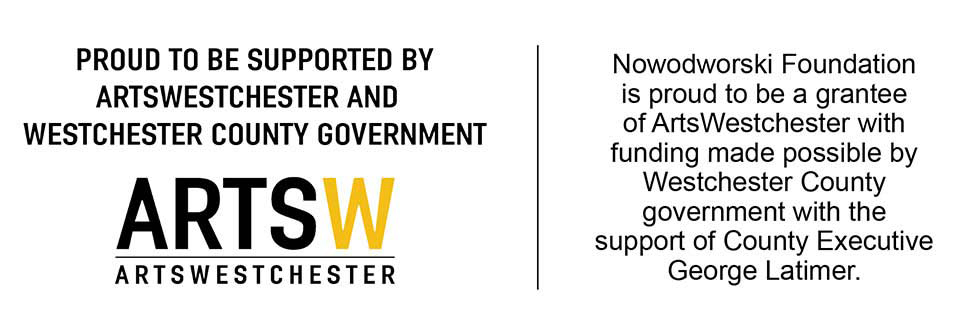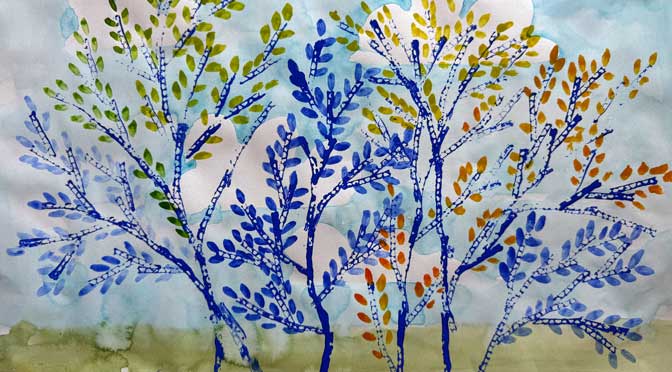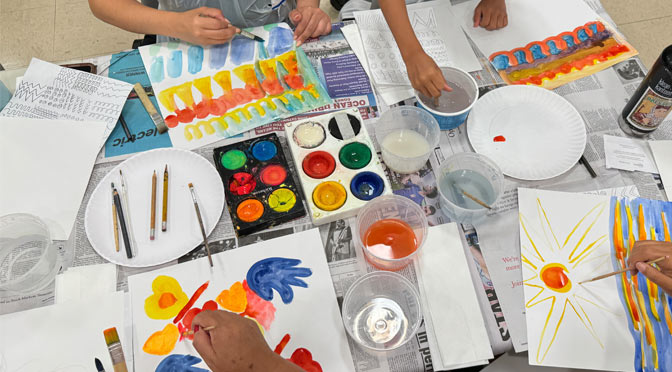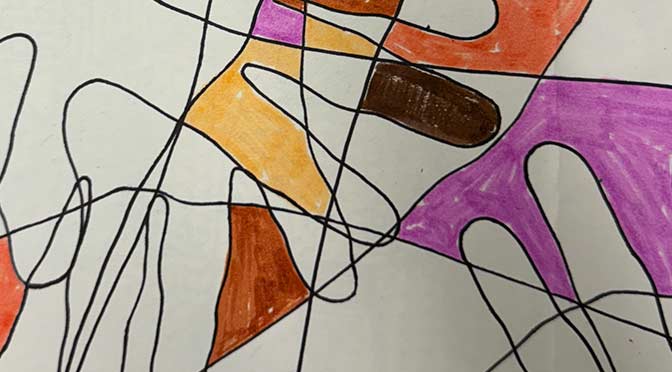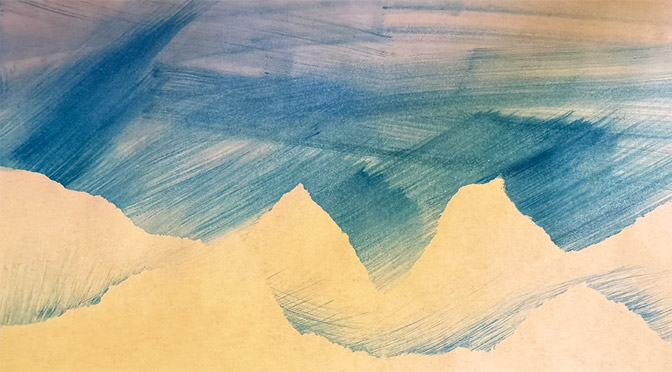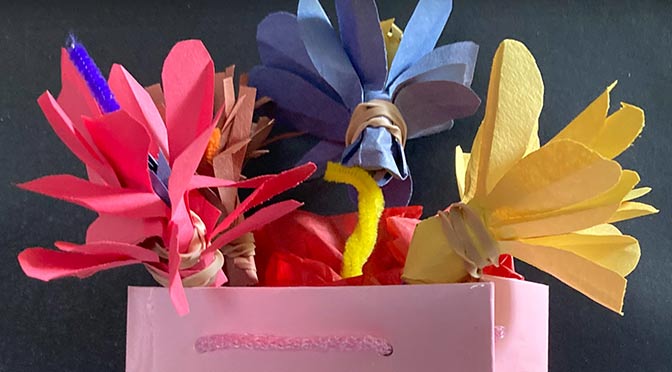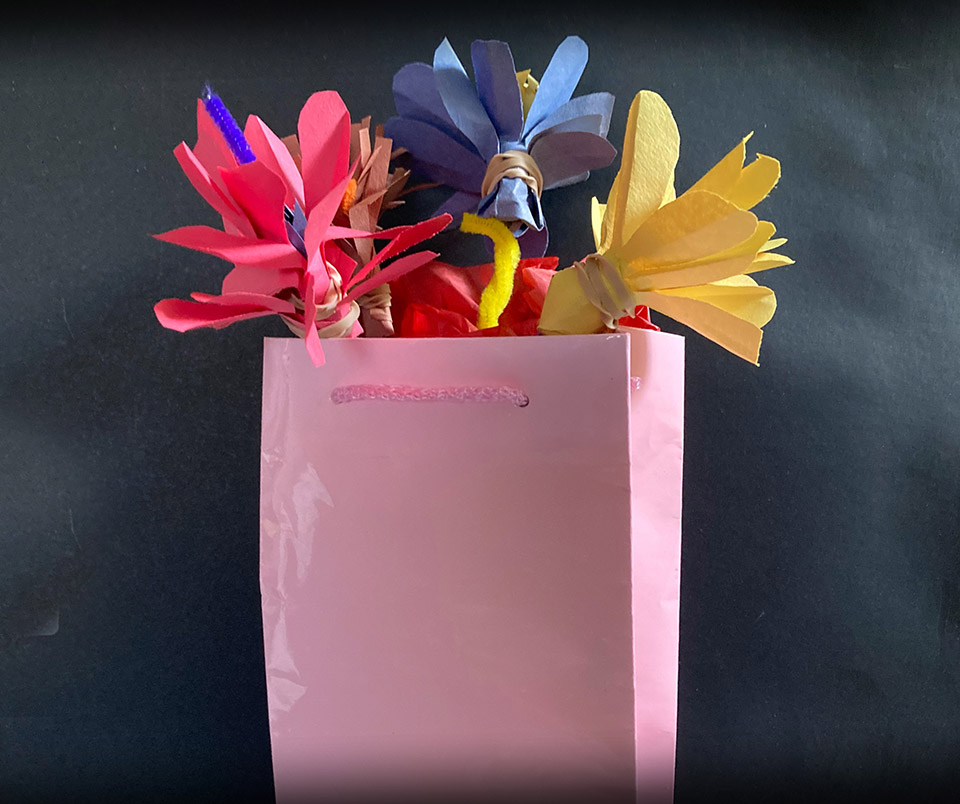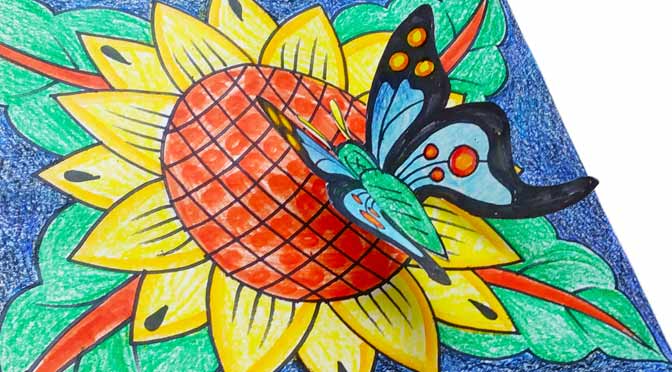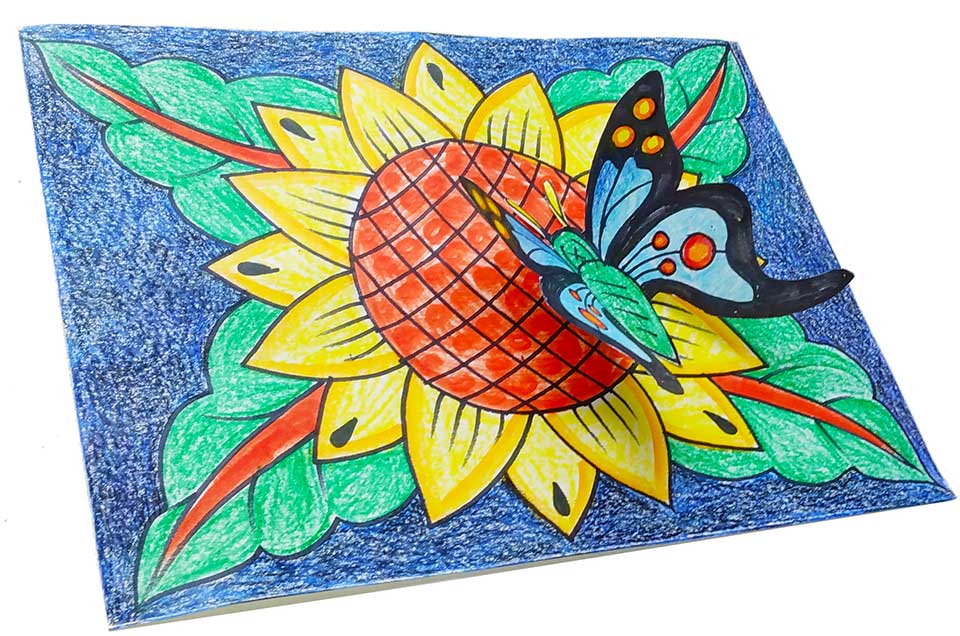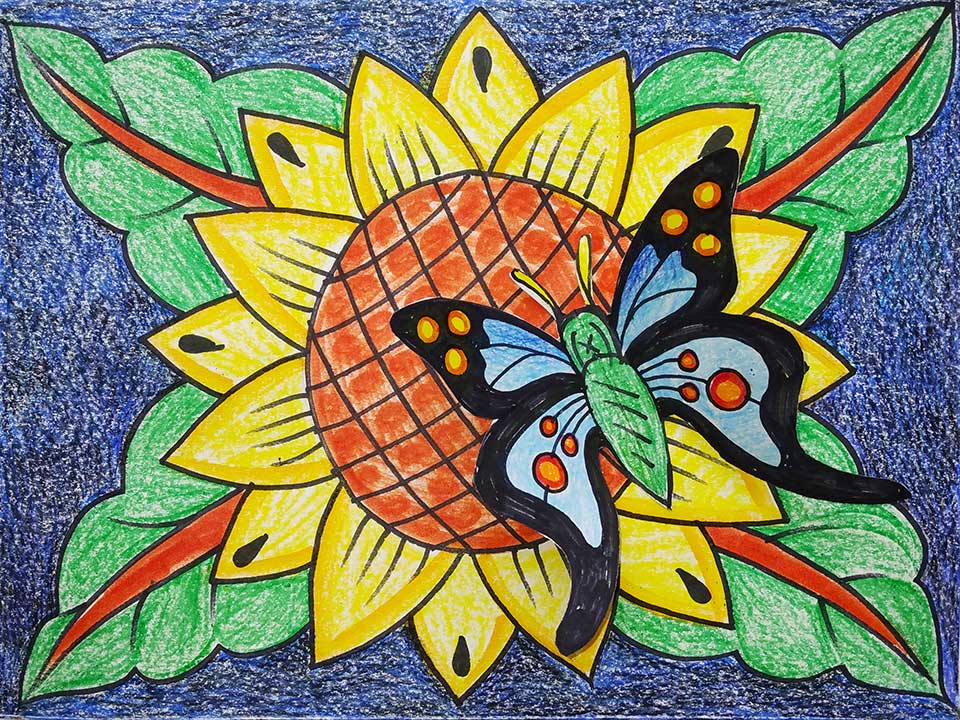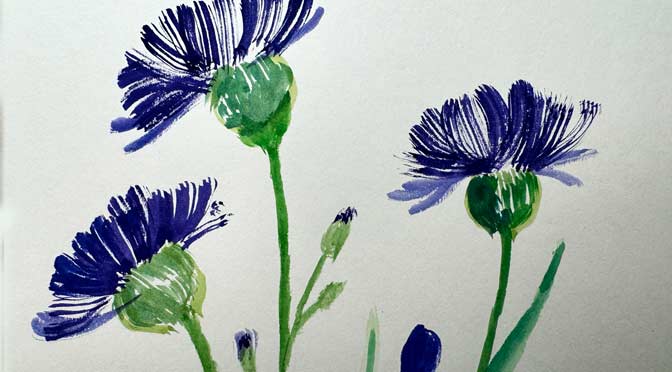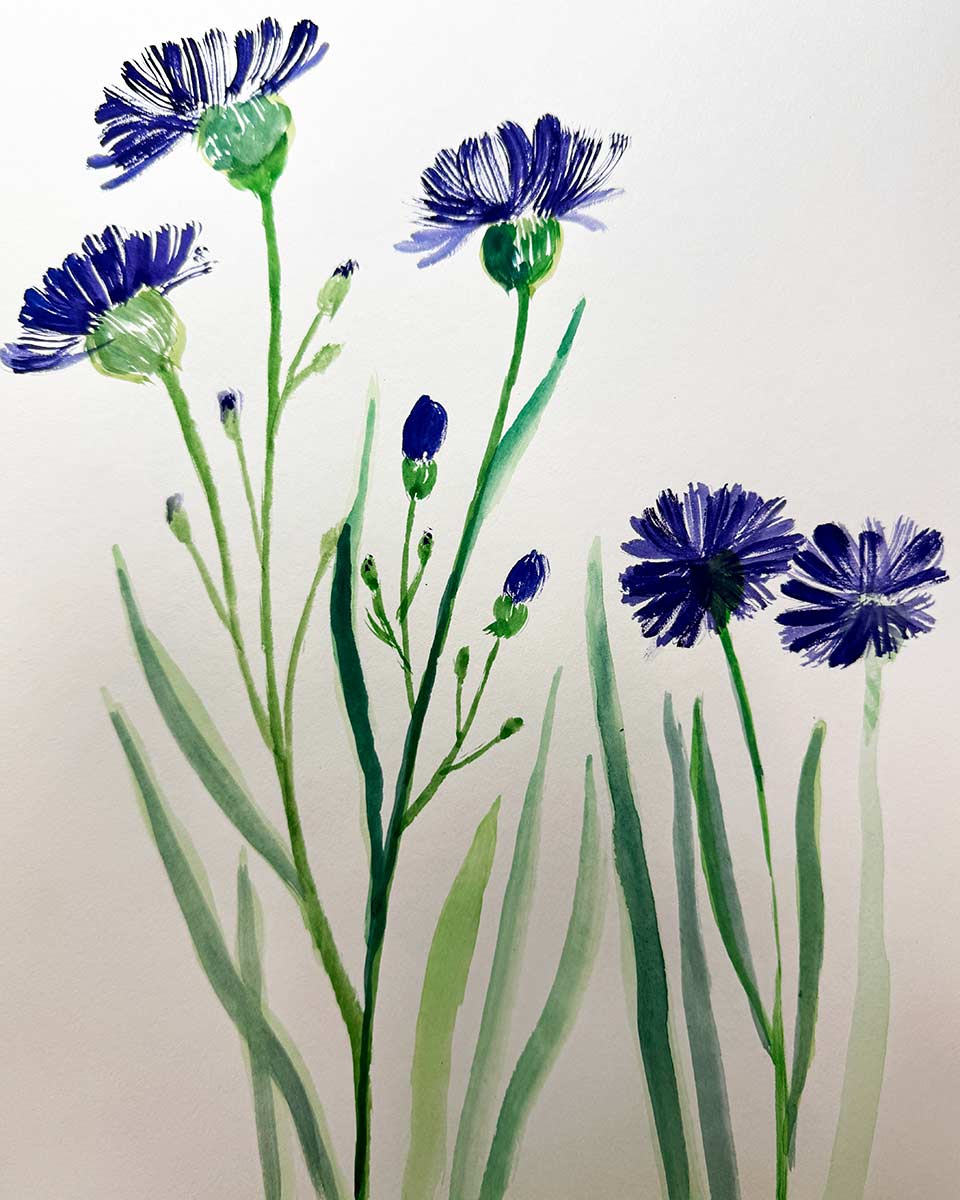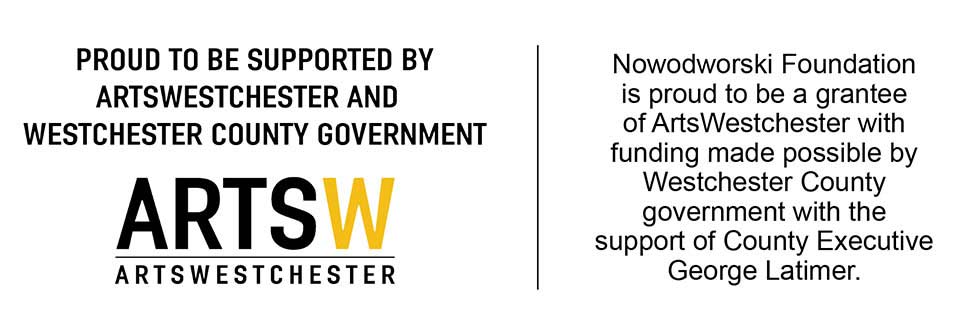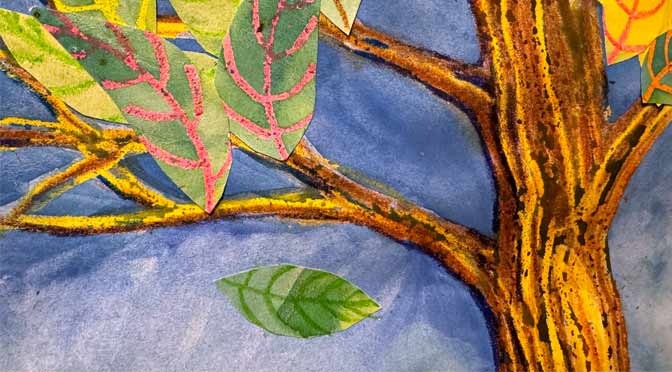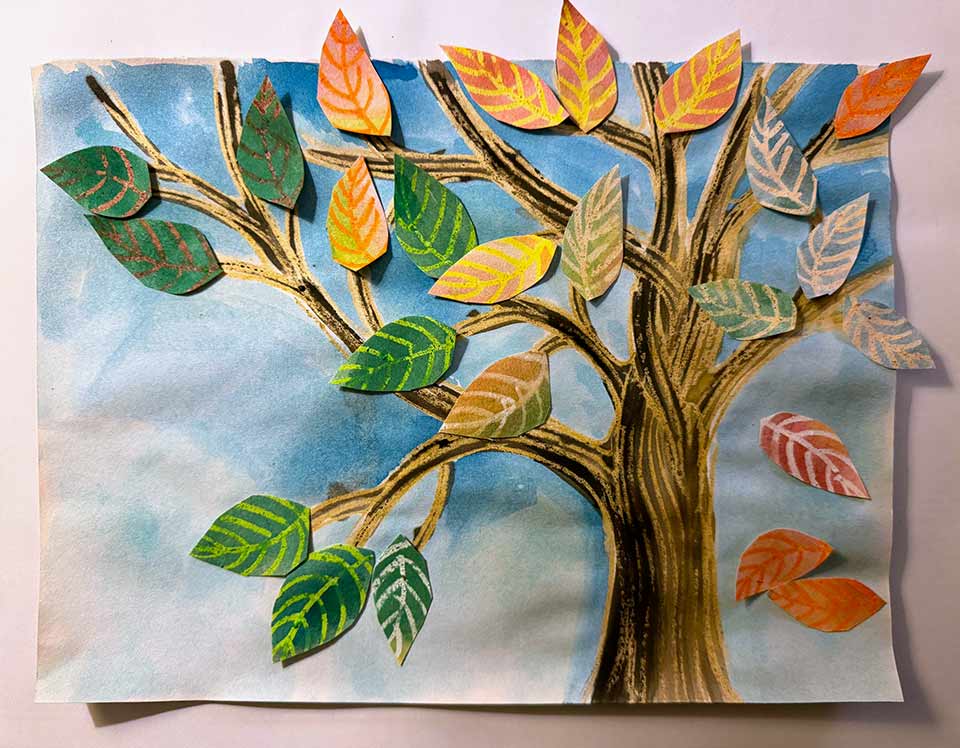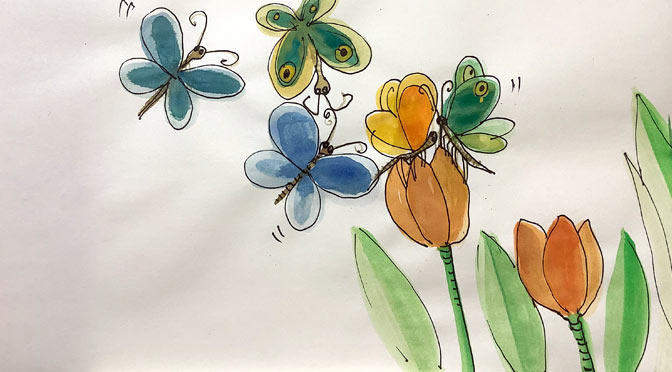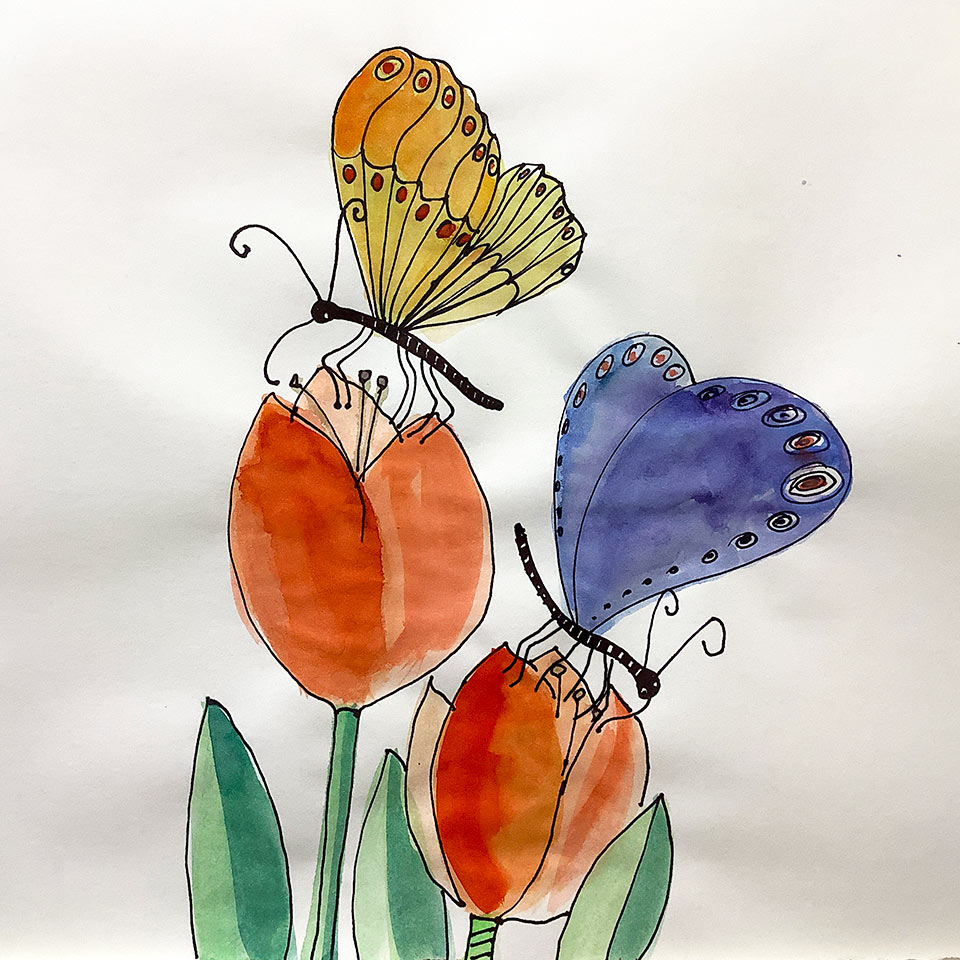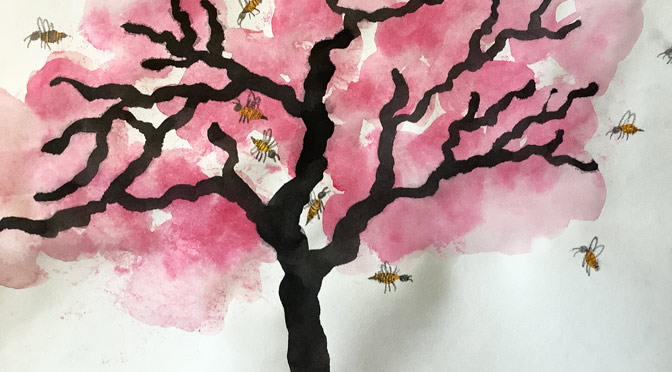POLLINATORS IN ACTION – The Birds, the Bees, and the Flowering Cherry Trees
Wednesday, March 27th at 5:00 PM. To sign up for this program send an email to office@sitenf.org with the note WORKSHOP in the subject line. We will email you the ZOOM ID and password.
Natural reproductive systems are often described using the birds and bees analogy. In the case of cherry trees, birds plant the seeds but bees are required to pollinate the flowers that make the fruit and seeds. —https://www.gardeningknowhow.com/
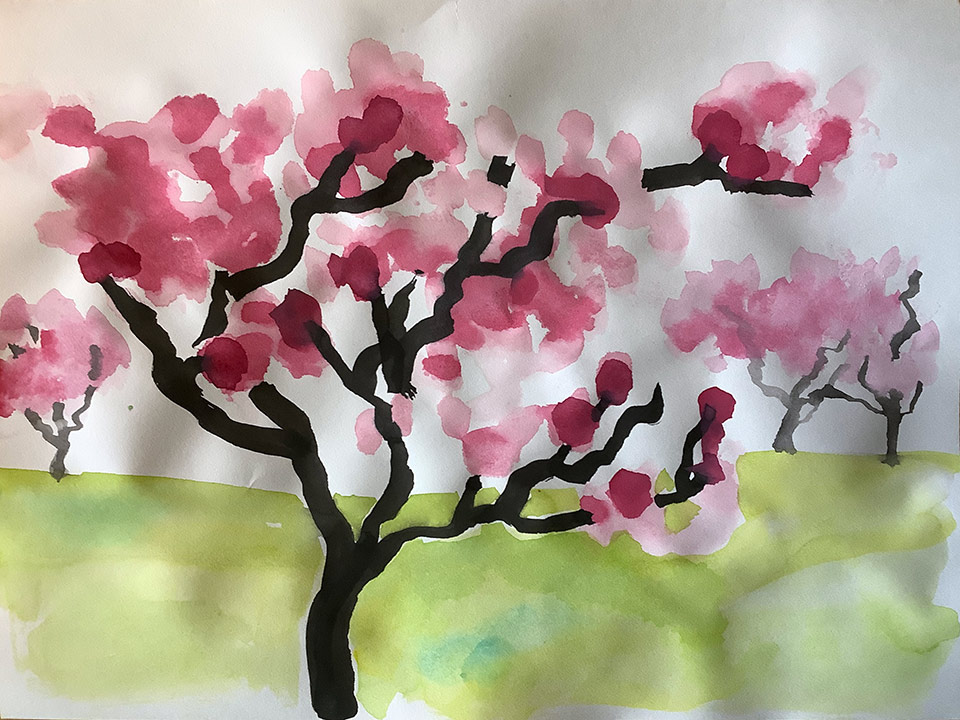
Art supplies:
- Watercolor or water-based paint
- Sturdy light plain paper
- Brushes
- Container of water
- Paper towel (few pieces)
- Plate or small cups or plate for color mixing
- Newspaper or table covering (optional but recommended)
“When you stroll through National Mall and Memorial Parks, you witness an intricately cultivated ecosystem. Almost all the plants are bred, selected, planted, pruned, and culled for visual effect. Yet untamed natural processes still occur and several species of animals live and flourish in this city “garden.”
Pollinators play a role in the life of this cultivated garden. Each year the color and scent of the cherry blossoms attract a variety of birds and insects. They play an accidental, though essential, role in pollination. Both plants and animals are dependent on pollinators. Pollination is the process by which the plant pollen grains are transferred from the male anther of a flower to the female stigma, which produces seeds for the next generation. Honey bees, wasps, beetles, and other insects fly or crawl to flowers seeking and eating the protein rich pollen. They sponge pollen onto their lower legs, abdomen, and mouth parts. As they fly from flower to flower, the pollen is then transferred to different flowers in different areas. In doing this, pollinators increase the diversity of the landscape’s species.
Birds like northern cardinals and blue jays are attracted to the blossoms in the spring. When the birds eat the blossoms, excess pollen gathers on their beaks thus spreading a wealth of cherry pollen in and around the park. Birds also may trim excess blossoms which helps aid the tree in preventing disease. Although the park plants most of the cherry trees, birds help to maintain that cycle of life. Birds also eat some insects found on the trees providing a supply of protein while also protecting the cherry tree from harmful insects.
So, if we want to continue to enjoy colorful displays and cheerful sounds of spring, we should appreciate the hidden powers of all that comes with that transient beauty. The birds that might leave droppings on you car; the pollen that makes you sneeze; the insects that might deliver a painful sting are all an important part of this delicately cultivated national garden.” —https://www.nps.gov/articles/birds-and-cherry-blossom-trees.htm
